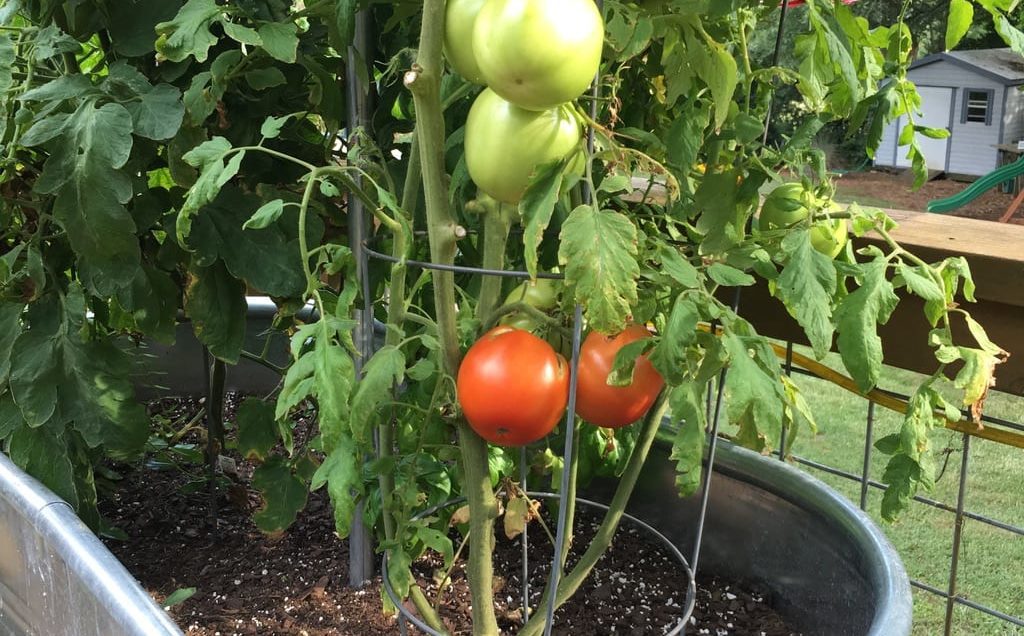Container gardens are a great option if you don’t have adequate yard space or are working within a confined space. Providing attractive plant scaping, container gardens can freshen up dull patio or balcony areas and the color from plants like tomatoes or peppers can easily brighten up a space.
Choosing the right gardening container
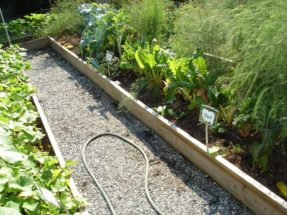
There are several options when it comes to containers – clay, wood, plastic and metal are all suitable materials. Here are three tips to follow when selecting your container.
- Container must be big enough to support plants when they are fully grown.
- Choose a container that can hold soil without spilling.
- Container must have adequate drainage.
You can also build vertical planters out of wood latticework lined with black plastic and filled with a lightweight potting mix, or out of welded wire shaped into cylinders lined with sphagnum moss and filled with soil mix. Depending on the size of your vertical planter, perforated plastic pipes may be needed inside to aid watering.
Whatever type of container you use, be sure that there are holes in the bottom for drainage so that plant roots do not stand in water. Most plants need containers at least 6 to 8 inches deep for adequate rooting.
Choosing the right soil mixture
A fairly lightweight potting mix is needed for container vegetable gardening. The soil needs to be porous because roots require both air and water. Packaged potting soil available at local garden centers is relatively lightweight and makes a good container medium.
For a very large container garden the expense of prepackaged potting mix may be quite high. Try mixing your own with one part peat moss, one part potting soil and one part clean coarse builder’s sand or perlite and a slow-release complete fertilizer. Lime may also be needed to bring the pH to around 6.5. In any case, a soil test is helpful in determining nutrient and pH needs, just as in a large garden. A fact sheet with details on soil testing can be found on the HGIC website.
Soil Tip:
Soil straight from the yard should not be used in a container because it may be too heavy and hold too much moisture when wet. This results in too little air for the roots, and it tends to shrink and pull away from the sides of the pot when dry.
Selecting fruits and vegetables
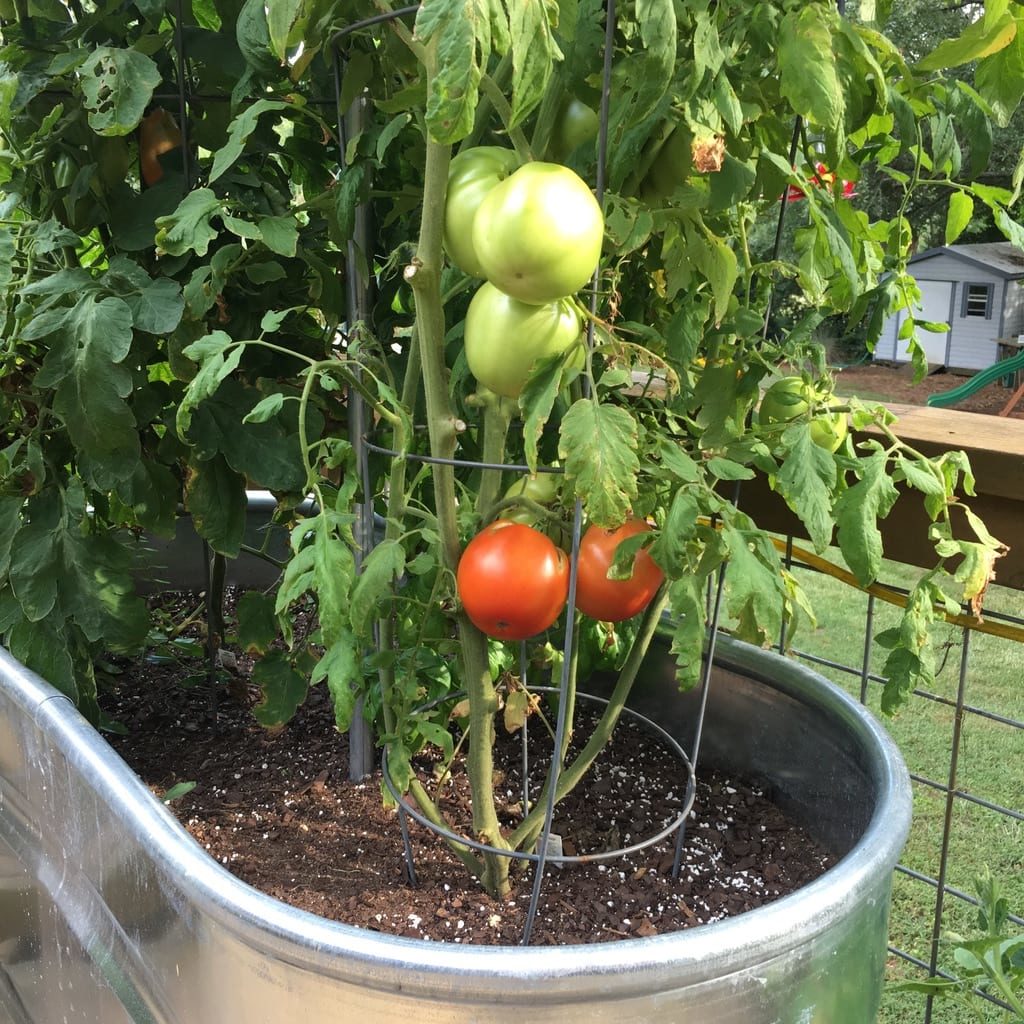
When thinking about what vegetables and fruits to plant, choose items that you and your family like to eat. Tomatoes, peppers, okra, and eggplant are great options for container gardens. These vegetables will grow all summer, providing great side dish options for dinner. Avoid the temptation to plant too many plants in the same container. For large fruiting crops like those above, one plant per pot is generally the max. While you can squeeze more plants of smaller crops like lettuce, basil, swiss chard and kale, into the space. One thing to note, plants like tomatoes may need a support stake or cage to keep the plant upright as it starts to bear fruit.
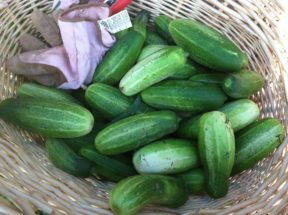
Planting and watering
Plant container crops at the same time you would if you were planting a regular garden – after the first frost in your area. Fill a clean container to within one-half inch of the top with the slightly damp soil mixture. Sow the seeds or set transplants according to instructions on the seed package. Put a label with the name, variety and date of planting on or in each container. After planting, gently soak the soil with water, being careful not to wash out or displace seeds. Thin seedlings to obtain proper spacing when the plants have two or three leaves. If cages, stakes, or other supports are needed, provide them when the plants are very small to avoid later root damage.
Pay particular attention to watering container plants. Because the volume of soil is relatively small, containers can dry out very quickly, especially on a concrete patio in full sun. Daily or even twice-daily watering may be necessary. Apply water until it runs out the drainage holes. On an upstairs balcony this may create problems with the neighbor downstairs, so make provisions for water drainage. Large trays filled with coarse marble chips work nicely. However, the soil should never be soggy or have water standing on top of it.
If the soil appears to be getting excessively dry (plants wilting every day is one sign), group the containers together so that the foliage creates a canopy to help shade the soil and keep it cool. On a hot patio, you might consider putting containers on pallets or other structures that will allow air movement beneath the pots and prevent direct contact with the cement. Check containers at least once a day and twice on hot, dry or windy days. Feel the soil to determine whether or not it is damp. Mulching and windbreaks can help reduce water requirements for containers. If you are away a lot, consider an automatic drip emitter irrigation system.
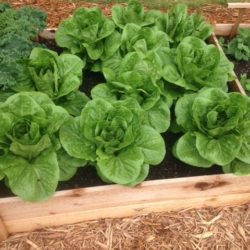
When the weather is cool, container plants may be subject to root rot if maintained too wet. Clay pots and other porous containers allow additional evaporation from the sides of the pots and watering must be done more often. Small pots also tend to dry out more quickly.
General care
Vegetable crops are heavy feeders and will need to be fertilized throughout the season. Most packaged potting mix comes with a starter charge of fertilizer that may last 8 to 10 weeks. For crops that grow longer than this, add a water-soluble fertilizer at the label-recommended rate. Repeat every two to three weeks. An occasional dose of fish emulsion or compost will add trace elements to the soil. Be careful not to overfertilize which can easily damage containerized plants.
The various types of insects and diseases that are common to any vegetable garden can attack vegetables grown in containers. Plants should be periodically inspected for the presence of foliage-feeding and fruit-feeding insects as well as the occurrence of diseases. When caught early, many insects and diseases can be slowed by handpicking the pests or diseased leaves from the plants. Protect plants from very high heat caused by light reflection from pavement. Move them to a cool spot or shade them during the hottest part of the day. Move plants to a sheltered location during severe rain, hail or windstorms and for protection from fall frosts.
For more information and resources on gardening, visit the Clemson University Home and Garden Information Center.
Get in touch and we will connect you with the author or another expert.
Or email us at news@clemson.edu

